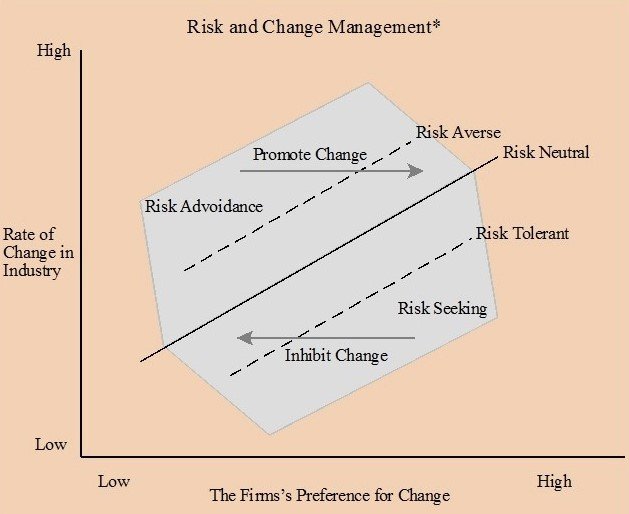Change management risks are factors that may inhibit or prevent the acceptance or adoption of that solution. These risks may involve any individuals involved or connected to the solution both leaders and employees.
Factors of Risk Assessment:
Add credibility to change management: Instead of pointing out the negatives, success factors illustrate the big picture and what is crucial for success.
Reduce barriers with positive language: It is understandable that people may become defensive when negative feedback is attributed to them or their work. Success factors express how leaders and employees contribute to success instead of failure.
Compare outcomes and evaluate success: Identifying the success factors creates a clear definition of success so outcomes can be evaluated.
Critical success factors
When a project is strong in every critical success factor, it is more likely to succeed. And of course, gaps or weaknesses show what can be improved to contribute to better results.
- Strong case for change: The reason or purpose of the change make sense at the time to all audiences.
- Impact of history is acknowledged: The causes of poorly managed changes in the past are identified, analyzed and mitigated as needed.
- Impact of culture is acknowledged: The culture of an organization is taken into consideration when planning the change, and this may require change as well.
- Definition of desired state is clear: All elements of the desired state (structure, process, people and culture) are defined and understood by all impacted people.
- Transition dip is acknowledged: The potential unwanted impacts of the transition are identified and mitigated if possible.
- Impact of multiple changes is understood: Other concurrent or overlapping changes are identified, and the impacts are analyzed and mitigated as necessary.
- Leaders are effective at all levels: Every leader involved understands the change and commits to fulfilling their role and responsibilities.
- Change practitioners are capable and willing: Change practitioners are ready, competent and have the resources necessary to support the change.
- Risk is identified and analyzed: Potential risks during and after the change are understood.
- Risk is mitigated effectively: The change management plan includes strategies and resources to mitigate the identified risks.
- Organization is competent in managing change: The organization has the resources and capability from internal or external sources to manage the entire change.
- Project management is effective: The solution implementation team is engaged, capable and incorporates the change management plan into the overall project plan.
- Decision making structure is operational: The role and responsibilities of all leaders are defined, and the change governance and decision-making structure are clear and operational.
Change Management and Risk
There are risks associated with change, and risks associated with the failure to change. Examples of risks associated with the failure to change include Eastman Kodak’s failure to recognize the market’s shift to digital media, and the U.S. auto industry’s failure to identify the threat of a worldwide oil shortage in the 1970s.
Risks associated with change are influenced by the firm’s preference for change and the rate of change in the industry. A firm’s preference for change can range from low to high. However, a low preference for change will be safe only if the rate of change in the industry is also relatively low. If the firm’s preference for change is low and the rate of change in the industry is high, the firm will be exposed to a higher risk of becoming obsolete. The upper most arrow in the graphic illustration below indicates that a firm with a risk avoidance preference in a rapidly changing industry should move towards a culture that promotes change. On the other hand, there is greater risk associated with a change culture that is too far ahead of the rate of change in the industry. The lower arrow indicates that a firm with a risk seeking preference in an industry with a low rate of change might choose to move towards a culture to inhibit change. Note that the line labeled risk neutral is where the firm’s preference for change matches the rate of change in the industry. The area between the dashed lines is the comfort zone where the firm may be somewhat risk-adverse or somewhat risk-tolerant, but not an outlier with respect to change.

Change Management and Transition
There are essentially two ways that change takes place in an organization: continuous improvement, and change initiated at a tipping point. Continuous improvement has been promoted for many years by statisticians, quality management experts and lean enterprise advocates. However, Malone and Mouritsen point out that improving on a continuous basis is not sufficient. As indicated in the discussion above, organizations must improve at a rate compatible with the rate set by the industry and markets in which it competes.
A tipping point change occurs when a firm faces a severe condition that threatens its competitive position or survival. The examples mentioned above related to Eastman Kodak and the U.S. auto industry illustrate change initiated by tipping points. Eastman Kodak did eventually make changes compatible with the digital media and equipment market, but was too late and took bankruptcy in 2102. The U.S. auto industry survived by producing more fuel-efficient autos, but during the transition lost a considerable share of their market to Japanese and European competitors. To avoid tipping point, change many firms have developed teams of experts who attempt to identify industry trends, threats, and events that might initiate a tipping point change.
Change Management and Strategic Alignment
According to Balanced Scorecard authors Kaplan and Norton, “managing strategy is about managing change”. Aligning change management with strategy includes selling a desired change internally, providing the necessary training, revising performance measurements to fit the change, and adopting the appropriate incentive systems. An organization must be able to sustain the change needed to execute the desired strategy from both technical and human resource perspectives (e.g., culture, leadership, teamwork).